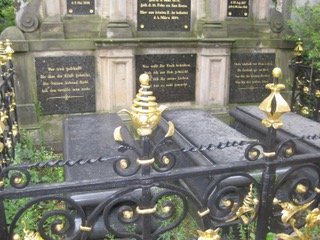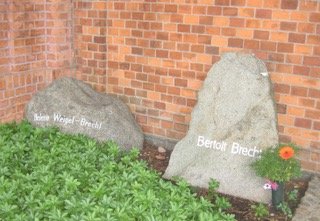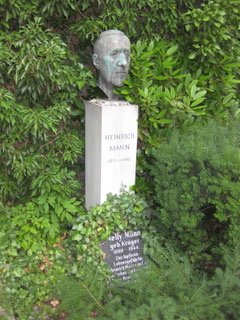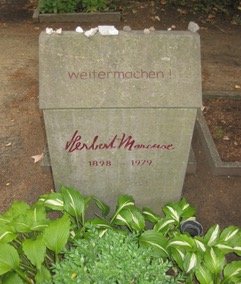A CHANGE OF GUARDS
A CHANGE OF GUARDS
On that hot July afternoon, it seemed like the insects had stopped buzzing as air and time on the Dorotheenstadt cemetery in East Berlin stood still. Looking for protective shade, I walked around, paying homage to the literary heroes of my youth: Heinrich Mann, Berthold Brecht, and Christa Wolf. The Dietrich Bonhoeffer memorial of the theologian who in a concentration camp had paid with his life for objecting to the Nazi euthanasia program proved elusive.
Searching, I wandered through rows of resting places and noticed her, a frail, hunched-over, white-haired lady. Animatedly she pointed out graves to a couple of teenagers who seemed less than interested. It appeared that she had chosen them at random as an audience to share the past. I walked over, expressed an interest in what she had to say, and gave them an excuse for a polite escape.
Mrs. Ursula Schmidt was full of anecdotes about her former contemporaries, now covered with moss, gravel, and stone. For a German of her generation, but maybe due to her age, she was unusually frank about her life. How terrible it was that she had never found out what had happened to her Jewish classmates. A furrow had formed between her brows, she felt guilty about not having been there for them. Eyes widened in horror; Ursula recalled how she could not step over the four dead men lying in the entrance hall of her building after a particularly heavy bombing of the city in 1944. As though she was afraid that I might consider her squeamish, she added: “But I was only 16 years old!” In her narrative, she fast-forwarded to the days of the repressive communist GDR regime, pointing out a few graves of political dissidents, leaving out the four months in 1945 when the Russian Army had gang-raped the city’s female population.
Sharing so much had exhausted her, and I offered to drive her home. She refused:
“The bus stops directly in front of my mountains.” She meant the overgrown mounds of rubble seen all over Berlin. She had been among the women who had piled them high from the debris of the bombed-out buildings in the postwar months. She added: “But I still have to show you the most important grave.” She found a simple granite slab covering the urn of the philosopher Herbert Marcuse. She looked intently at me as she pronounced the word engraved on its top:
“weitermachen” – keep going. I held her gaze. Her generation had removed the physical debris of a destroyed Germany. Still, now it was up to my generation to remove the emotional rubble, giving meaning to her sufferings by sharing her accounts, with a warning to a world that is still exposing young people to war and oppression. As she walked towards the bus stop, I felt like calling after her:
“Don’t worry, I will take good care of your stories,” but she had already disappeared from sight.
Pictured above:
-Dorotheenstadt Cemetery in Berlin Mitte, started in the late 18th century.
-Grave of Bertolt Brecht and his wife Helene Weigei
-Grave of Heinrich Mann and memorial plaque for his wife Nelly, who killed herself in Los Angeles unable to deal with the culture shock of forced emigration
-Grave of Herbert Marcuse
Editor’s Note
When Helene submitted this beautiful and somewhat chilling story about souls lost in World War II, she suggested that I hold it to publish on All Souls’ Day, a day for reflection and remembering the departed. I agreed that was a good idea. Of course neither of us had any insight into what the world would be like on this day. Uncanny, scary, how can this be? New hate has been unfurled. Jews around the world are being tested. We all need to be students of history. Helene Munson’s story, and her recently published book, Hitler’s Boy Soldiers: How My Father’s Generation Was Trained to Kill and Sent to Die for Germany let us know that the effects of hate and terrorism don’t end when the dead are buried. Indeed the toll is far greater.










